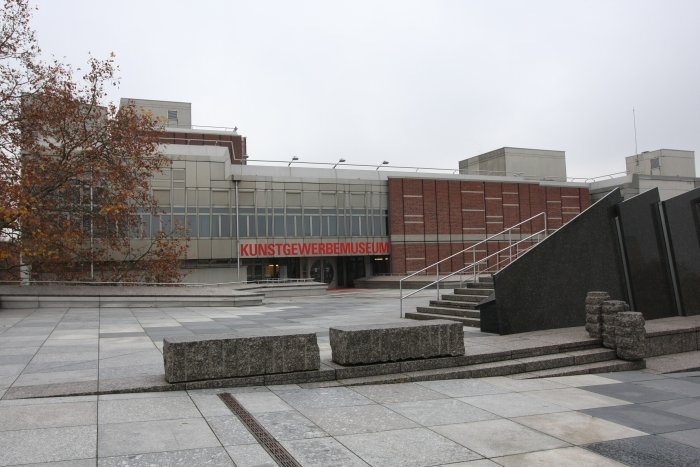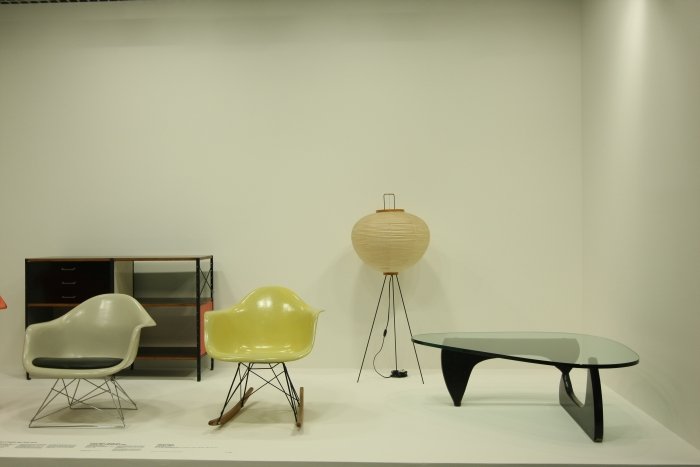Following three years closure and an investment of some four million Euros the Kunstgewerbemuseum Berlin - Berlin Museum of Decorative Arts - is once again open to the public.
In addition to architectural and interior design adaptations and conversions by Berlin based architects KUEHN MALVEZZI and refreshed displays chronicling the development of popular culture since the middle ages, the past three years have also brought the museum a permanent fashion section and new dedicated special exhibition spaces.

As with all similar institutions the Kunstgewerbemuseum Berlin suffers under the sheer volume of objects in its collection and the question of how best to display them.
As with all similar institutions the Kunstgewerbemuseum Berlin's solution is room after room filled with display case after display case.
In the wide open spaces of Rolf Gutbrod's 1967 construction the Kunstgewerbemuseum Berlin and KUEHN MALVEZZI just about get away with it; but there is no escaping the fact that in the 21st century there must be better ways of presenting valuable, old objects. And that such museal presentations should long since have become museal exhibits.
The shortcomings of the presentation strategy are particularly apparent in the dedicated design section, and for all in the current special exhibition dedicated to chair design which, although presenting some truly wondrous and important objects, just screams "storage room". And who wants to hang around storage room for longer than absolutely necessary? The permanent design exhibition space meanwhile commits, to quote our thoughts on the exhibition Alvar Aalto - Second Nature at the Vitra Design Museum, the "curatorial sin" of objects on white blocks.
Although, and as with Second Nature, the quality of the objects on display does more than make up for the lack of inspiration in the planning.
Everything one would expect to see is there, from Thonet via mid century US design, Germanic gute Form, and on over the golden age of Scandinavian design and Memphis to contemporary designers. All neatly abridged. Neatly stereotyped. Neatly close enough to the truth to be accessible and informative without boring or overtaxing.
And perversely therein may lie the secret for the rest of the museum. Don't try to present everything. Leave gaps, skip a little, move things along a little quicker than history recalls.
That, or install a few cafes at strategic points on the way round the museum to allow some respite from the endless, unabating, flow of objects, dates and information.

Despite our reservations about the presentation style, it is good and welcome that the Kunstgewerbemuseum Berlin is once again open, especially from a design perspective. Berlin has numerous museums that specialise in aspects of design, for example, the Bauhaus Archiv, the Bröhan Museum or the Werkbundarchiv - Museum der Dinge, but an international metropolis like Berlin needs a location where design in all its nuances can be presented, connections explained and developments followed.
And in that sense what is particularly pleasing in the new Kunstgewerbemuseum Berlin is that many of the design highlights aren't in the dedicated design section, but scattered throughout the museum, presented in the context of the situation from which they arose rather than abstractly as "design." And so, for example, we have a furniture ensemble from Henry van de Velde presented in context of Art Nouveau or a wicker furniture collection by Richard Riemerschmid presented in context of the Werkstätten movement from the same period. And while Berlin is represented throughout the various rooms, including delightful works by, for example, Karl Friedrich Schinkel, Peter Behrens and Herbert Hirche, we did miss a dedicated look at the history of design in the city. Not that museum's should be parochial about such things, far from it and we'd certainly be the first to complain if they were; however, given the role Berlin and Berliners have played in the development of product and furniture design, and given the current levels of creativity being practiced in the city, a focus would be nice.
As would works by a few more contemporary Berlin designers.
But let's wait and see what the special exhibition programme brings.
And until then the Kunstgewerbemuseum Berlin, and its display cabinets, can and indeed should be enjoyed in their new glory.
A few impressions: